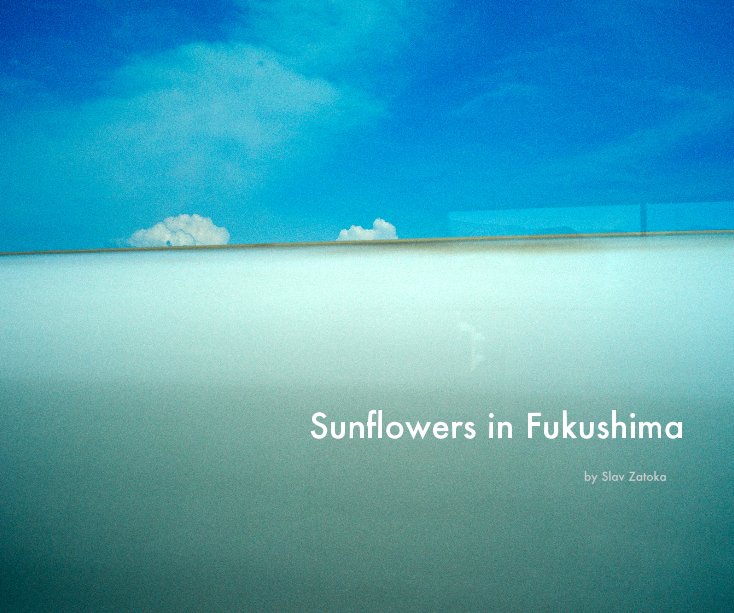Sunflowers in Fukushima
Japan 3 months after the Tohuku disaster.
by Slav Zatoka
This is the price your customers see. Edit list price
About the Book
This book is a record of my trip to Japan 3 months after the 9.0 magnitude Tohuku earthquake. The tsunami that followed the earthquake and the Fukushima nuclear crisis that came as a result of those natural disasters make it the toughest and the most difficult crisis for Japan since WWII.
The title of the book comes from a photograph I took in the village of Kitakami, in the city of Natori. It shows a woman planting sunflower seeds in a desert-like landscape of the post tsunami area near Sendai Airport. Later on I learned that a Japanese enterpreneur bought a wholesale amount of sunflower seeds and is sending it to various volunteer groups and individuals asking them to plant the seeds near Fukushima. Apparently the lack of a proper response to the Fukushima Daiichi nuclear crises by the government led to this unusual effort to stop the radiation using forces of nature. Sunflowers planted outside the Chernobyl power plant have reduced the soil contamination by 85% after the 1986 nuclear disaster in the Ukraine.
In the course of my travel across Tohuku region I met two young photographers who lost their studios to the 3/11 tsunami. In my short encounter with them I managed to photograph a moment of their present life. For Reiko Shiba, of Kitakama, near Natori, a fine art photographer, it was recovering and cleaning her neighbors' photos that put her back on track. Ken’ichi Kikuchi of Kamaishi had a portrait studio in downtown. Right now he photographs his hometown as it rebuilds from the devastating wave that surmounted the world’s biggest breakwater and heavily damaged the city.
In Kamaishi I was also able to join a group of volunteers from Caritas Japan in their efforts to clean up the photos recovered from the tsunami. This so-called “reversed photographic process” gave me access to the private lives of those affected by the disaster.
Finally, there is a record of my 24 hour stop in the city of Fukushima, where, straight from the bullet train station, I walked into an anti-nuclear demonstration organized by the National Railway Workers Union of Chiba.
To view a podcast for “Flowers in Fukushima” please visit http://www.vimeo.com/getcloser
The title of the book comes from a photograph I took in the village of Kitakami, in the city of Natori. It shows a woman planting sunflower seeds in a desert-like landscape of the post tsunami area near Sendai Airport. Later on I learned that a Japanese enterpreneur bought a wholesale amount of sunflower seeds and is sending it to various volunteer groups and individuals asking them to plant the seeds near Fukushima. Apparently the lack of a proper response to the Fukushima Daiichi nuclear crises by the government led to this unusual effort to stop the radiation using forces of nature. Sunflowers planted outside the Chernobyl power plant have reduced the soil contamination by 85% after the 1986 nuclear disaster in the Ukraine.
In the course of my travel across Tohuku region I met two young photographers who lost their studios to the 3/11 tsunami. In my short encounter with them I managed to photograph a moment of their present life. For Reiko Shiba, of Kitakama, near Natori, a fine art photographer, it was recovering and cleaning her neighbors' photos that put her back on track. Ken’ichi Kikuchi of Kamaishi had a portrait studio in downtown. Right now he photographs his hometown as it rebuilds from the devastating wave that surmounted the world’s biggest breakwater and heavily damaged the city.
In Kamaishi I was also able to join a group of volunteers from Caritas Japan in their efforts to clean up the photos recovered from the tsunami. This so-called “reversed photographic process” gave me access to the private lives of those affected by the disaster.
Finally, there is a record of my 24 hour stop in the city of Fukushima, where, straight from the bullet train station, I walked into an anti-nuclear demonstration organized by the National Railway Workers Union of Chiba.
To view a podcast for “Flowers in Fukushima” please visit http://www.vimeo.com/getcloser
Features & Details
- Primary Category: Arts & Photography Books
-
Project Option: Standard Landscape, 10×8 in, 25×20 cm
# of Pages: 138 - Publish Date: Jul 13, 2011
- Keywords japan earthquake, japan tsunami, tohuku disaster, earthquake in japan, nuclear crisis in japan, cartias japan, 3/11 disaster, sunflowers in fukushima, slav zatoka, fukushima, sendai, kamaishi, natori, kitakama, getcloser, getcloser.org
See More


